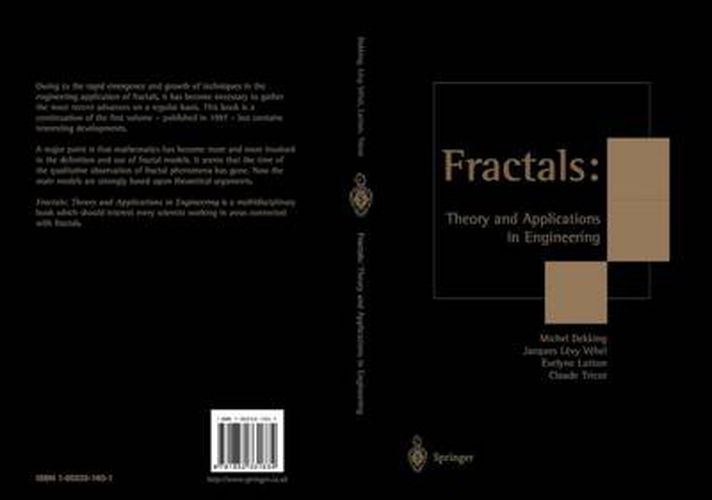Readings Newsletter
Become a Readings Member to make your shopping experience even easier.
Sign in or sign up for free!
You’re not far away from qualifying for FREE standard shipping within Australia
You’ve qualified for FREE standard shipping within Australia
The cart is loading…






This title is printed to order. This book may have been self-published. If so, we cannot guarantee the quality of the content. In the main most books will have gone through the editing process however some may not. We therefore suggest that you be aware of this before ordering this book. If in doubt check either the author or publisher’s details as we are unable to accept any returns unless they are faulty. Please contact us if you have any questions.
Owing to the rapid emergence and growth of techniques in the engineering application of fractals, it has become necessary to gather the most recent advances on a regular basis. This book is a continuation of the first volume - published in 1997 - but contains interesting developments. A major point is that mathematics has become more and more involved in the definition and use of fractal models. It seems that the time of the qualitative observation of fractal phenomena has gone. Now the main models are strongly based upon theoretical arguments. Fractals: Theory and Applications in Engineering is a multidisciplinary book which should interest every scientist working in areas connected to fractals.
$9.00 standard shipping within Australia
FREE standard shipping within Australia for orders over $100.00
Express & International shipping calculated at checkout
This title is printed to order. This book may have been self-published. If so, we cannot guarantee the quality of the content. In the main most books will have gone through the editing process however some may not. We therefore suggest that you be aware of this before ordering this book. If in doubt check either the author or publisher’s details as we are unable to accept any returns unless they are faulty. Please contact us if you have any questions.
Owing to the rapid emergence and growth of techniques in the engineering application of fractals, it has become necessary to gather the most recent advances on a regular basis. This book is a continuation of the first volume - published in 1997 - but contains interesting developments. A major point is that mathematics has become more and more involved in the definition and use of fractal models. It seems that the time of the qualitative observation of fractal phenomena has gone. Now the main models are strongly based upon theoretical arguments. Fractals: Theory and Applications in Engineering is a multidisciplinary book which should interest every scientist working in areas connected to fractals.